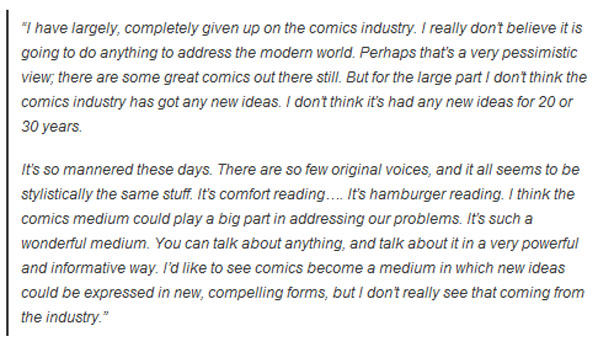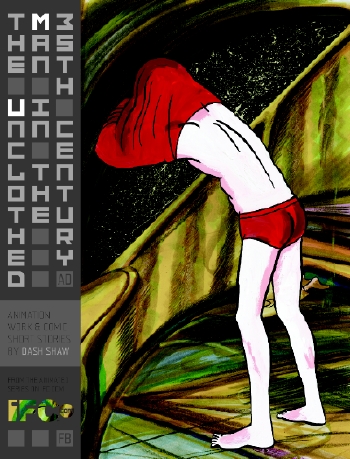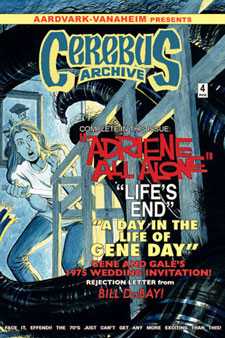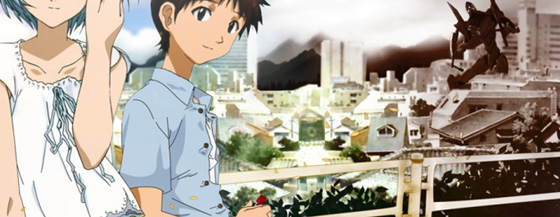
Sad news today, as Alvin Buenaventura officially announced the end of his publishing company Buenaventura Press at the (excellent) group blog Blog Flume, to which he contributes.
“I deeply regret having to take these actions, but the press experienced a devastating financial blow that made it impossible to continue.”
While I do actually have a good handle on what that ‘blow’ was, it’s not my place to say if Alvin doesn’t want to talk about it just yet. The fact that he closed down Buenaventura Press in January and just told the public now implies the level of privacy he’d like, and that’s totally within his rights.
I really liked a lot of Buenaventura’s output–they’re the only North American publisher to have released work by the wonderful Tom Gauld for example, they were the amazing Vanessa Davis‘ first publishers, they took over the publishing duties of the outstanding Kramers Ergot and surprising Comic Art magazine, not to mention all of the other fabulous prints, comics, and books that they released over their short lifetime. They were a regular exhibitor at TCAF and they always put on a fantastic-looking display. They put out good work by good cartoonists, and it’s a shame that there’s now one less publisher doing that. Cheers Alvin, you did great work.
Which brings me to my next point: There are still a lot of awesome publishers around that could probably use a few of your hard-earned dollars in exchange for wonderful comic books.

I don’t want to turn this into a polemic or anything, I’m not trying to guilt or badger you into giving up your money, but I know more than anything how easy it is to get swept along in the day-to-day-discussion of comics, the bullshit Blackest-Night-Siege-Heroic-Age-Brightest-Day nonsense is fun because you can be a part of the conversation online about how terrible it all is, but when it comes to spending money on good books that don’t get as much discussion–but are going to hold up on your shelves and in your comic boxes a helluva lot better down the road–it really is worth your time and effort to check out some of the smaller and boutique publishers out there, because they’re often doing amazing stuff.
And I’m not setting this up as a mainstream versus indie debate–that’s fucking stupid. That’s over. This is about buying comics you like versus buying comics you don’t. And there are a lot of great books out there getting left out of the discussion that are great, that are worth your time. I do my best to promote them here on the blog, to sell them in the store, to give them a platform and an audience at TCAF, but sometimes it isn’t enough and I have to make a direct appeal like this.
So here’s a list of publishers I like, and a book or two I recommend from them; Please support them with a purchase if you can:
AdHouse Books – http://adhousebooks.com/
Recommended: Afrodisiac, by Jim Rugg. The Venice Chronicles, by Enrico Casarosa
Bodega Distribution – http://www.bodegadistribution.com/
The Mourning Star Volume 1 & 2, by Kazimir Strzepek
Conundrum Press – http://conundrumpress.com/
Drop-In, by Dave Lapp. Ruts & Guilles: Nine Days in Saint Petersburg, by Phillippe Girard.
Drawn & Quarterly – http://drawnandquarterly.com/
Market Day, by James Sturm. Vellevision, by Maurice Vellekoop. Red Colored Elegy, by Seiichi Hayashi. Get a Life by Dupuy & Berberian.
Fanfare / Ponent-Mon – http://ponentmon.com/
A Distant Neighborhood Volumes 1 & 2, by Jiro Taniguchi
Fantagraphics Books – http://fantagraphics.com/
Almost Silent, by Jason. Artichoke Tales, by Megan Kelso. Ganges #1-3 by Kevin Huizenga.
Koyama Press – http://koyamapress.com/
Lose #1 & #2, by Michael DeForge. A Very Kraftwerk Sumer, by Chris Hutsul.
La Pasteque – http://lapasteque.com/
la Fugue, by Pascal Blanchet. Jimmy et le Bigfoot, by Pascal Girard.
New Reliable Press – http://newreliable.com/
Horribleville Volume 1, by KC Green.
Oni Press – http://onipress.com/
Scott Pilgrim Vols 1-6, by Bryan Lee O’Malley.
Picturebox Inc. – http://www.pictureboxinc.com/
New Enigineering & Travel, by Yuichi Yokoyama.
Pop Sandbox – http://popsandbox.com/
Kenk, by Richard Poplak.
SLG Publishing – http://slgpublishing.com/
Street Angel, by Jim Rugg and Brian Marruca. NIL, by James Turner. DORK Vols 1 & 2, by Evan Dorkin. SQUEE!, by Jhonen Vasquez.
Sparkplug Comic Books – http://sparkplugcomicbooks.com/
Bookhunter, by Jason Shiga. Jin & Jam #1, by Hellen Jo.
Top Shelf Comix – http://topshelfcomix.com/
Alec: The Years Have Pants, by Eddie Campbell. Superfuckers, by James Kochalka. Moving Pictures, by Kathryn & Stuart Immonen.
Topatoco – http://topatoco.com/
Never Learn Anything From History, by Kate Beaton. Adventures of Dr. McNinja, by Chris Hastings.
Tug Boat Press – http://tugboatpress.com
Papercutter Anthologies, by various.
U.S.S. Catastrophe – http://www.usscatastrophe.com/
Pretty much everything they stock is awesome.
…and that’s the tip of the iceberg. There are dozens of single-title self publishers doing great work like Carla Speed McNeil and Finder, Jeff Smith and Rasl, Eric Powell’s Chimichanga… hell, tons of creators trying to scrape out a living publishing under a larger umbrella too. Not to mention the many fine retailers like The Beguiling trying to stock and sell these books too.
There are people doing good work, and while it’s tempting to get yourself down when a great publisher disappears, scuff your shoes on the ground and say “shit”, it’s much more productive to remember that there are still folks out publishing great work… and we don’t want them going anywhere, you know?
– Chris









 &
& 


























